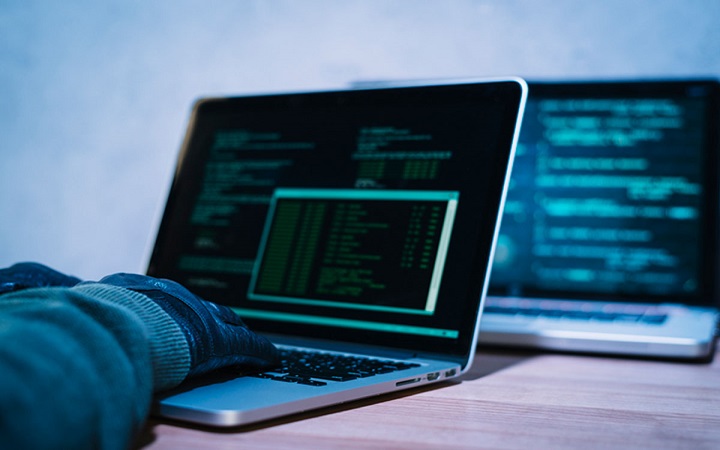
Secure Your Devices From Hackers
The growth of the World Wide Web in the 1990s introduced new possibilities and spawned new industries, but it also brought about new downsides of connectivity. Tons of spam started to infiltrate email accounts, and computer viruses wreaked havoc on business networks. A new threat known as computer hacking extended the definition of thievery to include infiltrating your computer, stealing personal information, tricking you into revealing private data, and using that data to steal and extort personal information, such as business secrets, bank account credentials and even people’s identities

Despite the prevalence of computer hackers, most businesses rely on the internet to track their financials, order and maintain inventory, conduct marketing, and PR campaigns, connect with customers, engage in social media, and perform other critical operations. Yet we continue to hear about massive computer breaches, even at giant corporations with robust security measures in place.
Small businesses are often targeted as well, especially because they may underestimate the risk of cybercrime and may not have the resources to employ expensive cybersecurity solutions. Follow these tips to protect your devices and safeguard your sensitive data:
1. Use a firewall.
Windows and macOS have built-in firewalls – software designed to create a barrier between your information and the outside world. Firewalls prevent unauthorized access to your business network and alert you to any intrusion attempts.
Make sure the firewall is enabled before you go online. You can also purchase a hardware firewall from companies such as Cisco, Sophos or Fortinet, depending on your broadband router, which also has a built-in firewall that protects your network. If you have a larger business, you can purchase an additional business networking firewall.
2. Install antivirus software.
Computer viruses and malware are everywhere. Antivirus programs such as Bitdefender, Panda Free Antivirus, Malwarebytes, and Avast protect your computer against unauthorized code or software that may threaten your operating system. Viruses may have easy-to-spot effects – for example, they might slow your computer or delete key files – or they may be less conspicuous.
Antivirus software plays a major role in protecting your system by detecting real-time threats to ensure your data is safe. Some advanced antivirus programs provide automatic updates, further protecting your machine from the new viruses that emerge every day. After you install an antivirus program, don’t forget to use it. Run or schedule regular virus scans to keep your computer virus-free. [Looking for antivirus software for your business? Check out our picks for the Antivirus software.]
3. Install an anti-spyware package.
Spyware is a special kind of software that secretly monitors and collects personal or organizational information. It is designed to be hard to detect and difficult to remove and tends to deliver unwanted ads or search results that are intended to direct you to certain (often malicious) websites.
4. Use complex passwords.
Using secure passwords is the most important way to prevent network intrusions. The more secure your passwords are, the harder it is for a hacker to invade your system.
More secure often means longer and more complex. Use a password that has at least eight characters and a combination of numbers, uppercase and lowercase letters, and computer symbols. Hackers have an arsenal of tools to break short, easy passwords in minutes.
5. Keep your OS, apps and browser up-to-date.
Always install new updates to your operating systems. Most updates include security fixes that prevent hackers from accessing and exploiting your data. The same goes for apps. Today’s web browsers are increasingly sophisticated, especially in privacy and security. Be sure to review your browser security settings in addition to installing all-new updates. For example, you can use your browser to prevent websites from tracking your movements.
6. Ignore spam.
Beware of email messages from unknown parties, and never click on links or open attachments that accompany them. Inbox spam filters have gotten pretty good at catching the most conspicuous spam. But more sophisticated phishing emails that mimic your friends, associates, and trusted businesses have become common, so keep your eyes open for anything that looks or sounds suspicious.
7. Back up your computer.
Always be sure you can rebuild as quickly as possible after suffering any data breach or loss. Backup utilities built into macOS (Time Machine) and Windows (File History) are good places to start. An external backup hard drive can also provide enough space for these utilities to operate properly.
8. Shut it down.
Always being on makes your computer a more visible and available target for hackers; shutting down breaks the connection a hacker may have established with your network and disrupts any possible mischief.
9. Use virtualization.
Not everyone needs to take this route, but if you visit sketchy websites, expect to be bombarded with spyware and viruses. While the best way to avoid browser-derived intrusions is to steer clear of unsafe sites, virtualization allows you to run your browser in a virtual environment.
10. Secure your network.
Routers don’t usually come with the highest security settings enabled. When setting up your network, log in to the router, and set a password using a secure, encrypted setup. This prevents intruders from infiltrating your network and messing with your settings.
